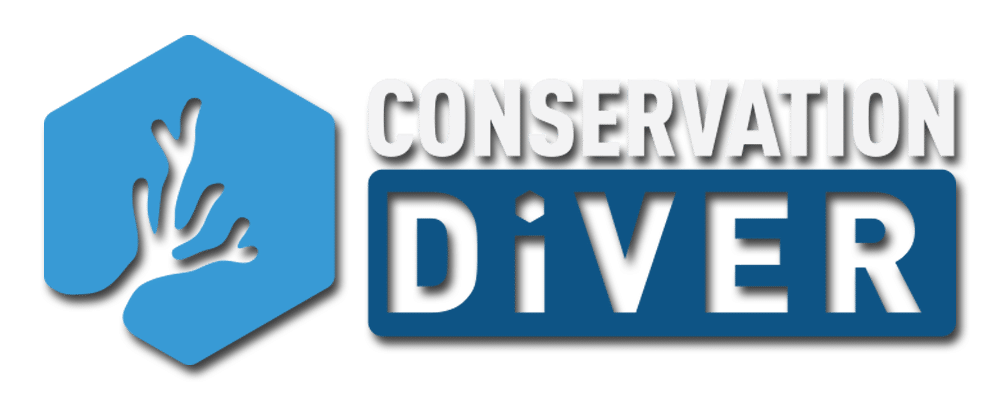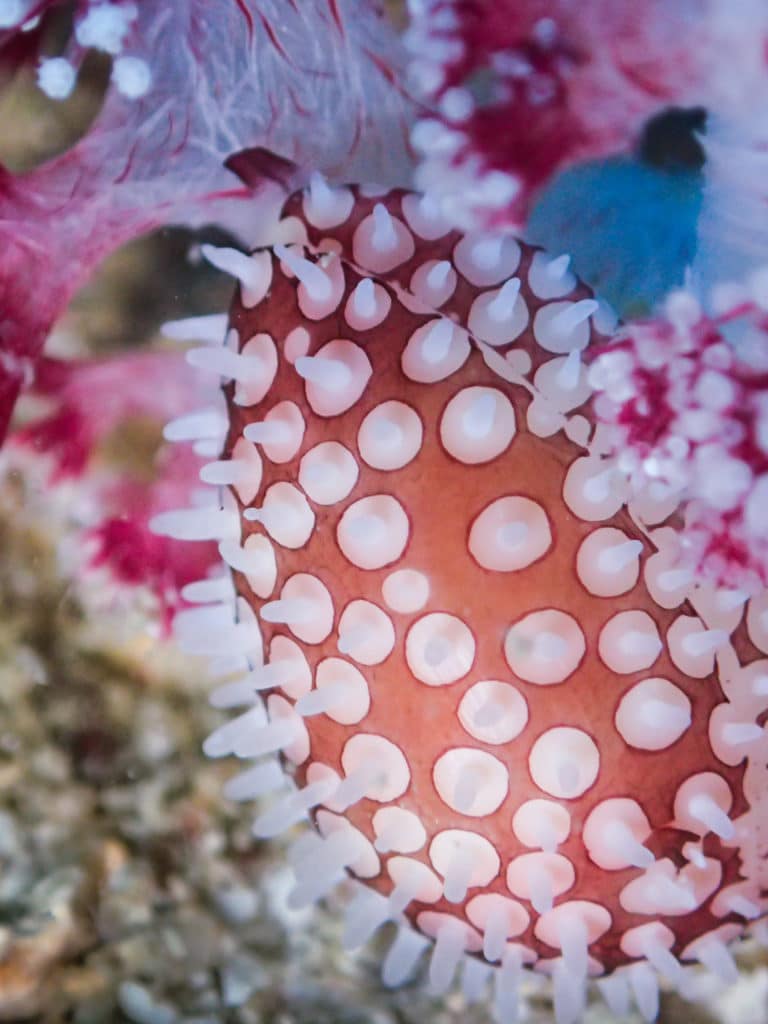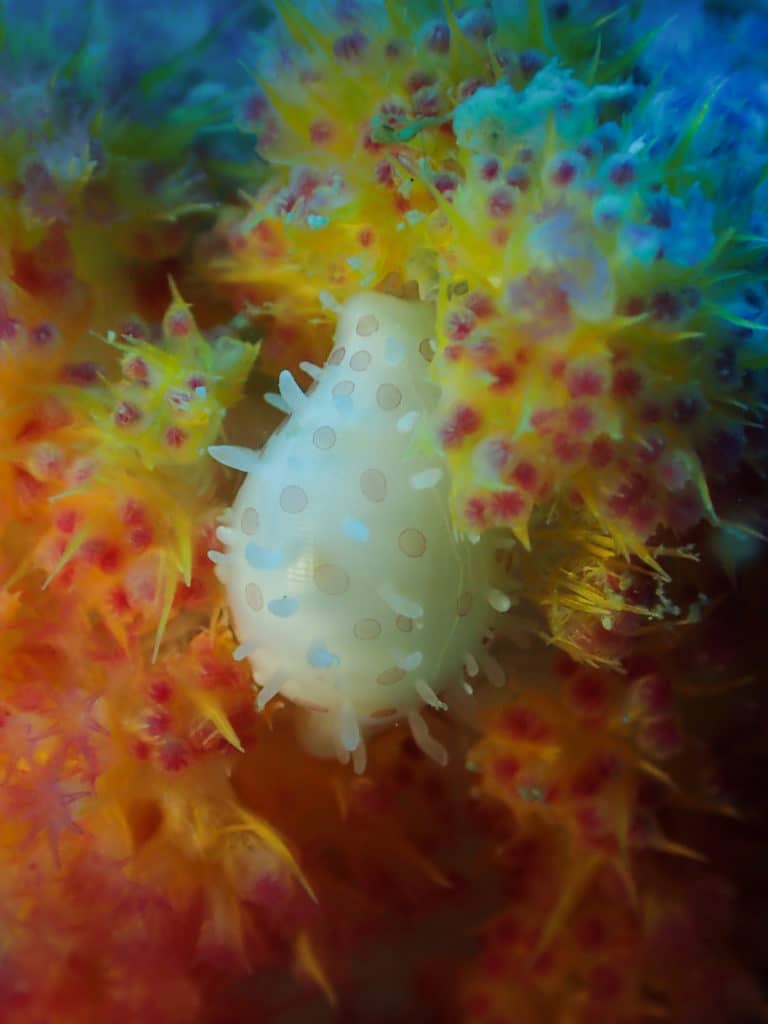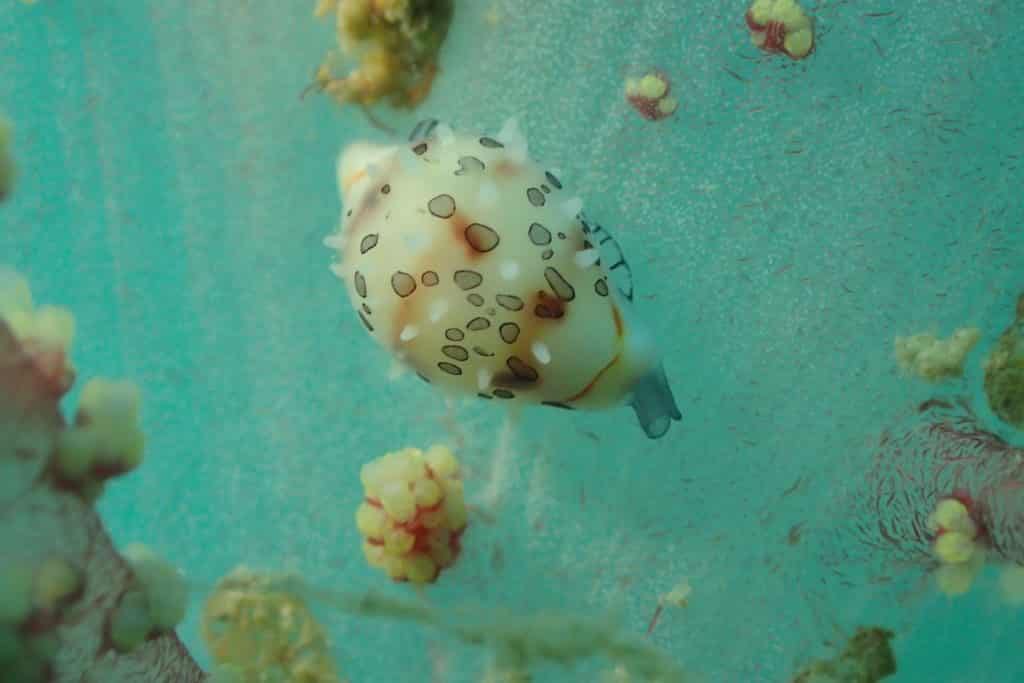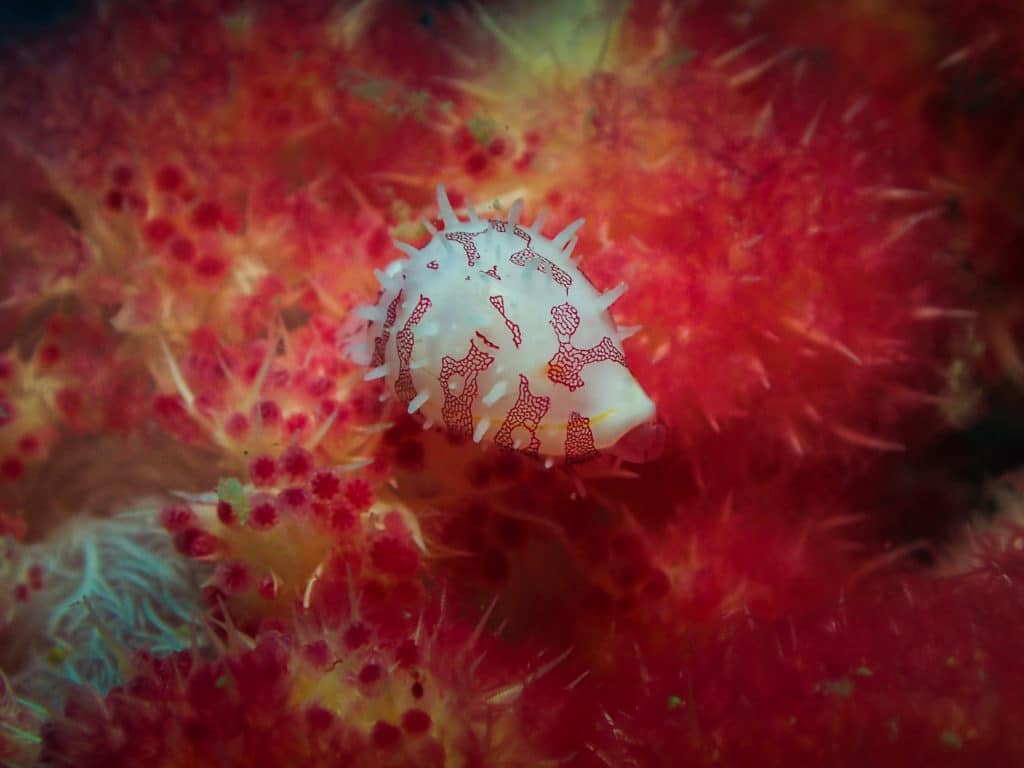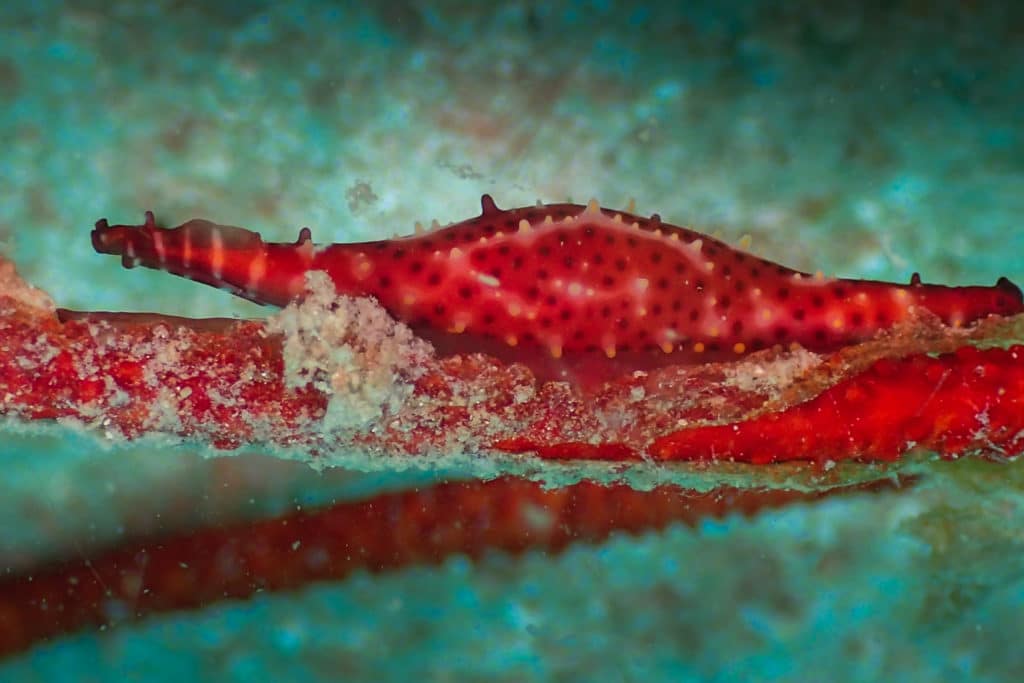Seashells such as ovulids and cowries are two which are often misidentified for each other. Ornamental patterns and colours are typical, and they possess mantles which extend over their shells, often providing a brilliantly texturized, nearly alien-esque appearance. Both play seperate ecological roles, and are sought after for their aesthetics amongst ocean photographers.
Today, we will be using Cowries for comparative purposes, but focus mostly instead, on their cooler cousins. The False-Cowries, or Ovulids, are a striking and diverse family of shells that are easy to mistake for the common Cowrie- many common names even include ‘cowrie’ in the title; spindle cowrie (Phenacovolva rosea) is one example. Luckily, there are morphological and ecological indicators to help us distinguish these two frequently muddled gastropods.
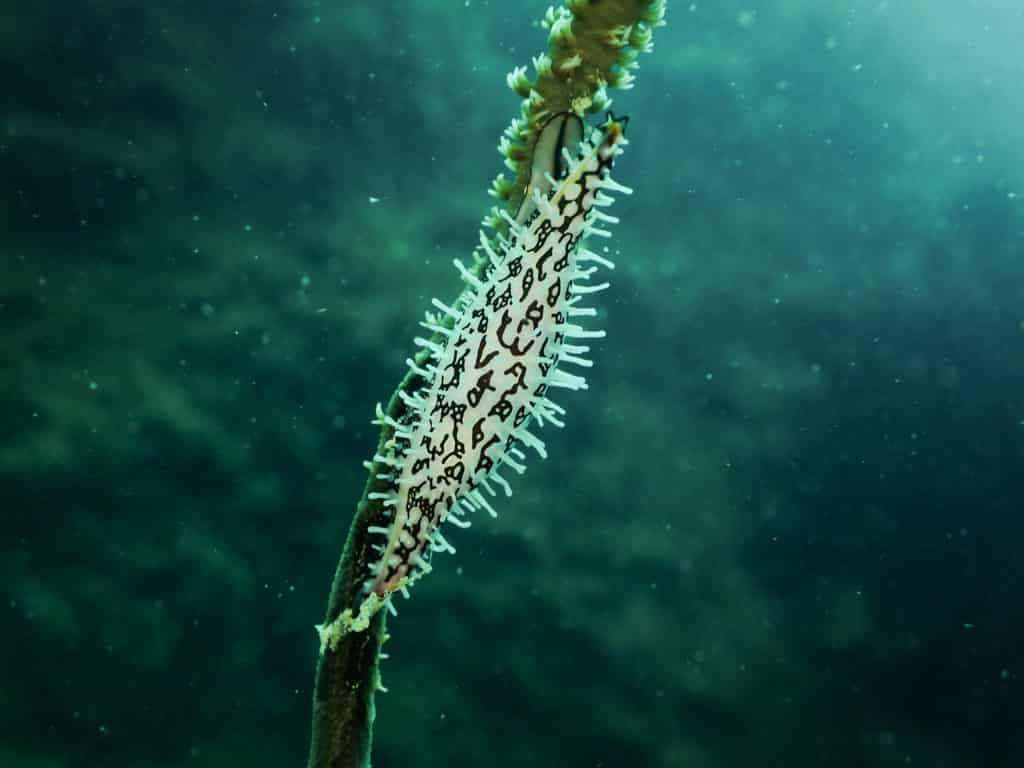
Ovulids vs Cowries
The Ovulids, or Ovulidae are a family of gastropods descending from the super family Cypraeoidea (not to be confused with the Cypraeidae- the family which contains the true cowries). Both families are closely related and are spread across most marine habitats.
They have an astounding range of shell designs and mantles (the tissue which extends over the shell for maintenance and feeding). The simplest way to tell the two apart are by comparing the general shape. Cowries are globular and generally remain consistent in shape amongst species. Ovulids on the other hand are varied in colour and pattern, are more elongate, and overall have more variation to their shape than the common cowrie shells- to some degree, they are even able to change their morphology to suit their habitat (Rosenberg 1992). Looking underneath, cowries are distinguishable by inward rolling ‘lips’ on both sides of the shell, while ovulids have only a single lip on one side (Schmidt-Kittler, Norbert Vogel 2012). Ovulids are easily mistaken for sea slugs when their protective mantle is fully extended, due to their often brightly ornamented nature. Both however, are aesthetic organisms which grace our marine habitats and excite macro photographers globally.
Ovulid vs Cowrie Diet
True cowries are bottom dwellers, whos diets include soft corals, sponges, anemones and sometimes algae in their younger stages. Ovulid diets are surprisingly different, consisting of soft coral, sea pens, gorgonians and many other Octocorallia species. Additionally, in the Indo-Pacific, there have been records of them feeding on Antipatharia species (often nicknamed ‘black corals’ (Reijnen et al. 2010). At our Koh Tao Conservation Diver centre, New Heaven Reef Conservation Program, we make notably more observations of these cowrie-allies at deeper sites, such as muck ecosystems over coral dominated ones (hail the muck habitat!). They can often be found in deep sandy areas that have a diverse range of sessile community (the non-moving bottom community).
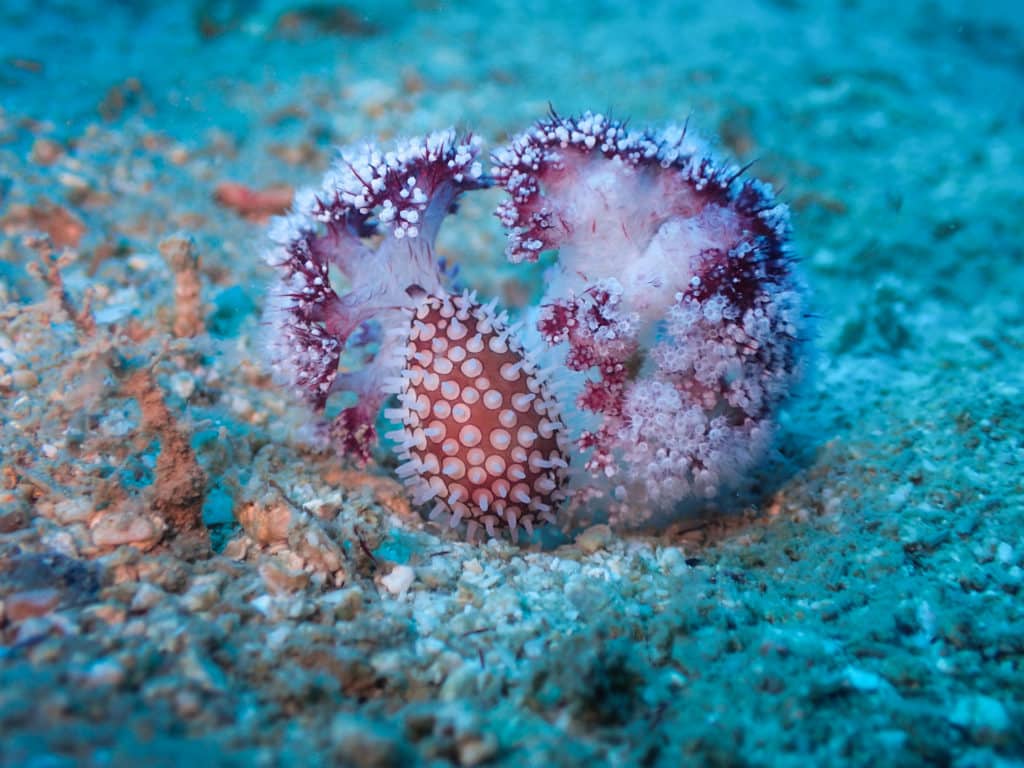
Ovulids are ectoparasites, which means that they live on their food source, using it as habitat and a backdrop. Remarkably, they attain alimentary homochromy, where they change colour by the incorporation of pigments from their food, and to some degree are thought to be able to control their size and shape depending on their host. This facilitates better camouflage to their environment and food source, as well as a colourful warning to potential predators of unpalatability (Reijnen et al. 2010).
What Ovulids have we found on Koh Tao?
- Priminovula brevis: Among the larger of the ovulids seen on Koh Tao, P. brevis can be found exclusively upon Dendronepthya spp. corals in the muck.
Priminovula brevis Diminovula cf. aurantiomacula
- Diminovula cf. aurantiomacula: The most abundant of the ovulid species observed at Koh Tao, exclusively found directly upon Dendronepthya spp. corals in the muck.
- Diminovula cf. margarita: Sometimes abundant, often found alongside D. cf. aurantiomacula, exclusively found directly upon Dendronepthya spp. corals in the muck.
Diminovula cf. margarita Diminovula culmen
- Diminovula culmen: The least likely of this genus to be found at Koh Tao, D. culmen can be recognised by its patchy, camouflage-patterned mantle colouration. They can be found upon the Dendronepthya spp. soft corals in the muck.
- Naviculavolva deflexa: Another rarity, N. deflexa is separated from the species discussed so far in having developed an elongated shape, stretching from a globular form to one resembling the more spindle shape of later species. Interestingly, the mantle of the species is white, with a thin margin of orange/red in its anterior portion, giving this shell a naked appearance. This is also the first of the species that may be observed closer to the reef/reef edge, feeding on the octocoral Rumphella sp..
Naviculavolva deflexa Phenacovolva cf. nectarea/rosea:
- Phenacovolva cf. nectarea/rosea: This species is known under one of two names that are likely the same species (awaiting nerdy people to get their act together). It is part of the true ‘spindle cowrie’ ovulids representing the largest of the species found at Koh Tao. Their elongated shapes are covered in a mantle that can range from pale pink through red and deep purple and is ornamented with short rounded papillae that are the same colour and others that are bright yellow. This species has been observed on numerous different octocorals including Dendronepthya spp., Echinogorgia spp., Ellisella spp. and Solenocaulon spp.
- Phenacovolva sp.: A currently unidentified member of the genus Phenacovolva, this is the second, rare species of true ‘spindle cowrie’ ovulid found in the waters of Koh Tao. It is differentiated from the previous species in having a dark reticulated pattern on its mantle and being ornamented with numerous pointed white papillae. So far, they have only been found on Antipatharia spp. (whip corals).
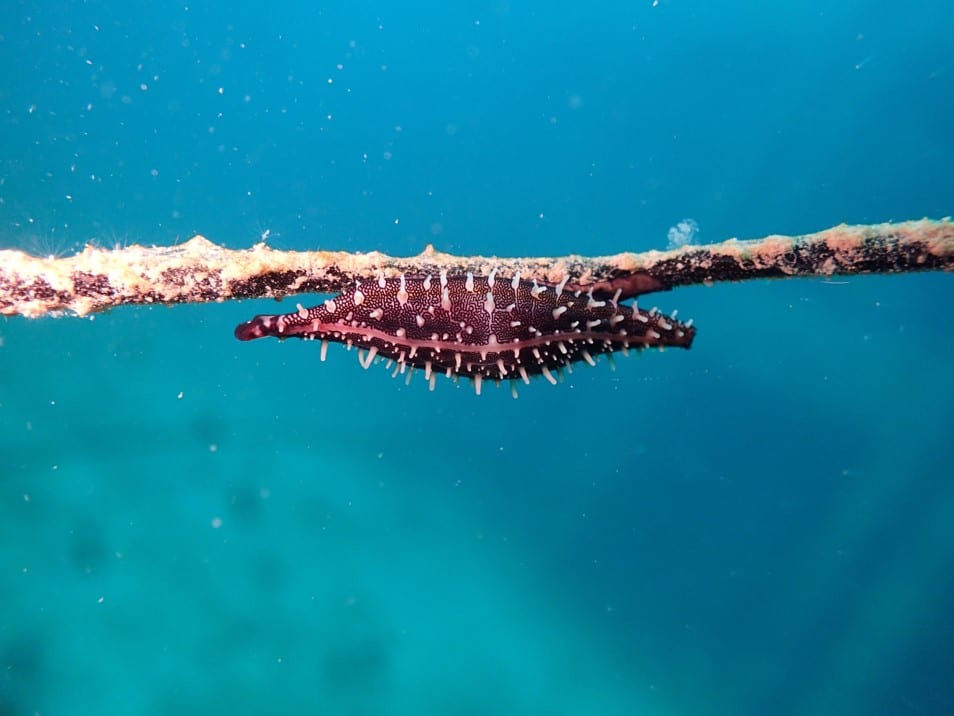
References
Reijnen, B. T., B. W. Hoeksema, and E. Gittenberger. 2010. Host specificity and phylogenetic relationships among Atlantic Ovulidae (Mollusca: Gastropoda). Contributions to Zoology 79:69–78.
Rosenberg, G. 1992. An introduction to the Ovulidae ( Gastropoda : Cypraeacea ) 20:4–7.
Schmidt-Kittler, Norbert Vogel, K. 2012. Constructional Morphology and Evolution. Springer-Verlag, Berlin Heidelberg.
Photos provided by Dr Rahul Mehrotra and Elouise Haskin, but mostly Rahul.
